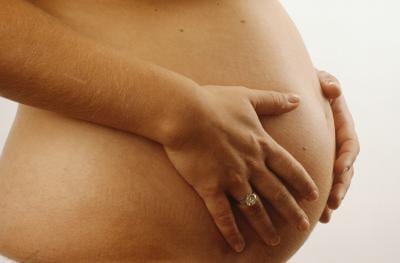During pregnancy, your baby is active. There are no positions your baby cannot wiggle into, and most positions are temporary. While fetal positioning does not matter much during pregnancy, it becomes important when you go into labor. Delivering a baby who is head down is the preferred position by most health care providers. You should talk with your provider about what positions of delivery he is comfortable with before you go into labor.
Significance
Babies spin into many different positions through the course of pregnancy and labor. They often find the position that is most comfortable for them at the present moment. Many health care providers require that your baby is head down to attempt a vaginal birth. However, in some states, health care providers will deliver a breech presentation, which means the baby’s buttocks or feet come before the head. The most common position for delivery is head down, with the baby’s chin tucked tightly against its chest with the back of the baby’s head entering into the pelvis.
Occiput Anterior Position
This position is the easiest and quickest way for birth to happen. In this position, the baby is facing head down and the back of the baby’s head, the occiput, is pointed toward the mother’s stomach. This position encourages the baby to tuck its chin as it is descending into the pelvis.
Occiput Posterior Position
In this position, the baby is facing head down and the occiput is pointed toward the mother’s back, which means the baby is looking at the mother’s stomach. A common term for this position is “sunny side up.” According to MayoClinic.com, this position can make delivery more complicated, or longer, because the baby’s neck does not extend under the pubic bone as easily. However, mothers can and do deliver successfully with babies in this position.
Frank Breech Position
In a frank breech position, the baby’s buttocks comes first. Normally, the hips are flexed and the baby’s legs are extended toward its head. After delivery, many babies stay in this position for an extra week or two. The frank breech is the most common type of breech position, and if your health care provider is comfortable with delivering a frank breech baby, there are normally no complications.
Complete and Footling Breech Positions
In a complete or footling breech position, the baby is sitting in the uterus with his feet and buttocks near the opening of the cervix. Unlike the frank breech, his legs and hips are both flexed instead of extended. A baby can be born vaginally in a complete breech or footling breech position. If your health care provider is uncomfortable with this type of delivery, he may recommend trying to manually turn the baby or deliver through a Caesarean section.
Transverse Position
In a transverse position, your baby is lying horizontally in your uterus with her head on one side of your abdomen and her feet on the other. Babies often get into this position during pregnancy, but if she is still transverse when you go into labor, your health care provider may try to change her position manually or recommend a Caesarean section.





